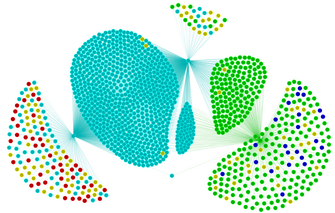Durand Lab
Computational molecular biology and computational genomics; especially, the evolution of genomic organization and function.
-

Yuting Xiao receives an honorable mention for her pressentation on Domain Promiscuity Correlates with Rates of Domain Gain and Loss at ISMB 2022.
-

Dr. Maureen Stolzer wins a $250 prize for her poster How Plastic are Multidomain Proteins? at Recomb-CG 2018!
-
 Flexbility and constraint in the evolution of the Spo0 signaling
pathway
Flexbility and constraint in the evolution of the Spo0 signaling
pathway
Philip Davidson's article appears in the September issue o PLoS Genetics!
-
 Design Rules for Multidomain Proteins Across the Tree of Life
Design Rules for Multidomain Proteins Across the Tree of Life
NSF announces new awards for Understanding the Rules of Life
-
 In Cyanobacteria, HIP1 Does the Wave.
In Cyanobacteria, HIP1 Does the Wave.
The spatial distributions of Highly Iterated Palindrome 1 (HIP1) in 40 cyanobacterial genomes reveal a periodic pattern that suggests a functional role in shaping chromosome architecture.
-
 Bacterial Gene Acquisition May Drive Niche Expansion
Bacterial Gene Acquisition May Drive Niche Expansion
Phylogenetic reconciliation reveals that a gene that contributes to infection of the conjunctiva by Streptococcus pneumoniae was acquired by horizontal transfer from the pig pathogen Streptococcus suis.
